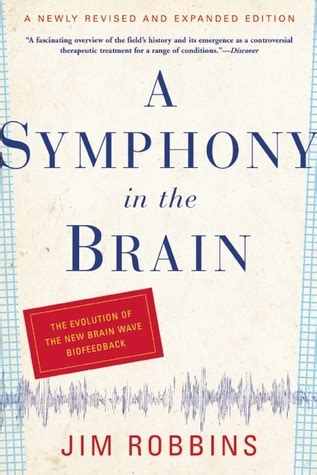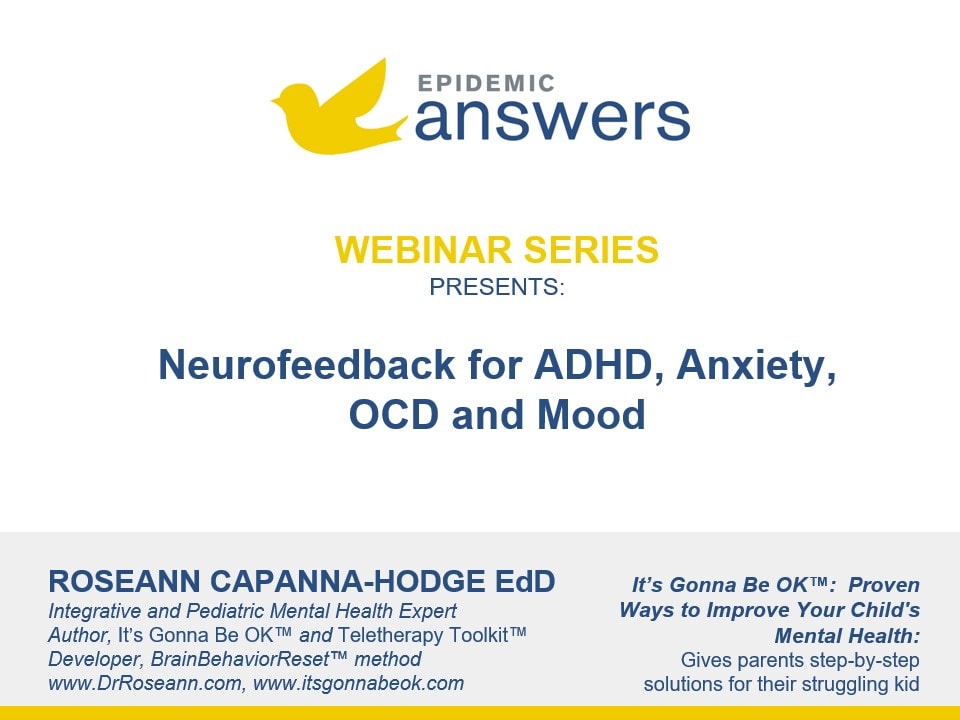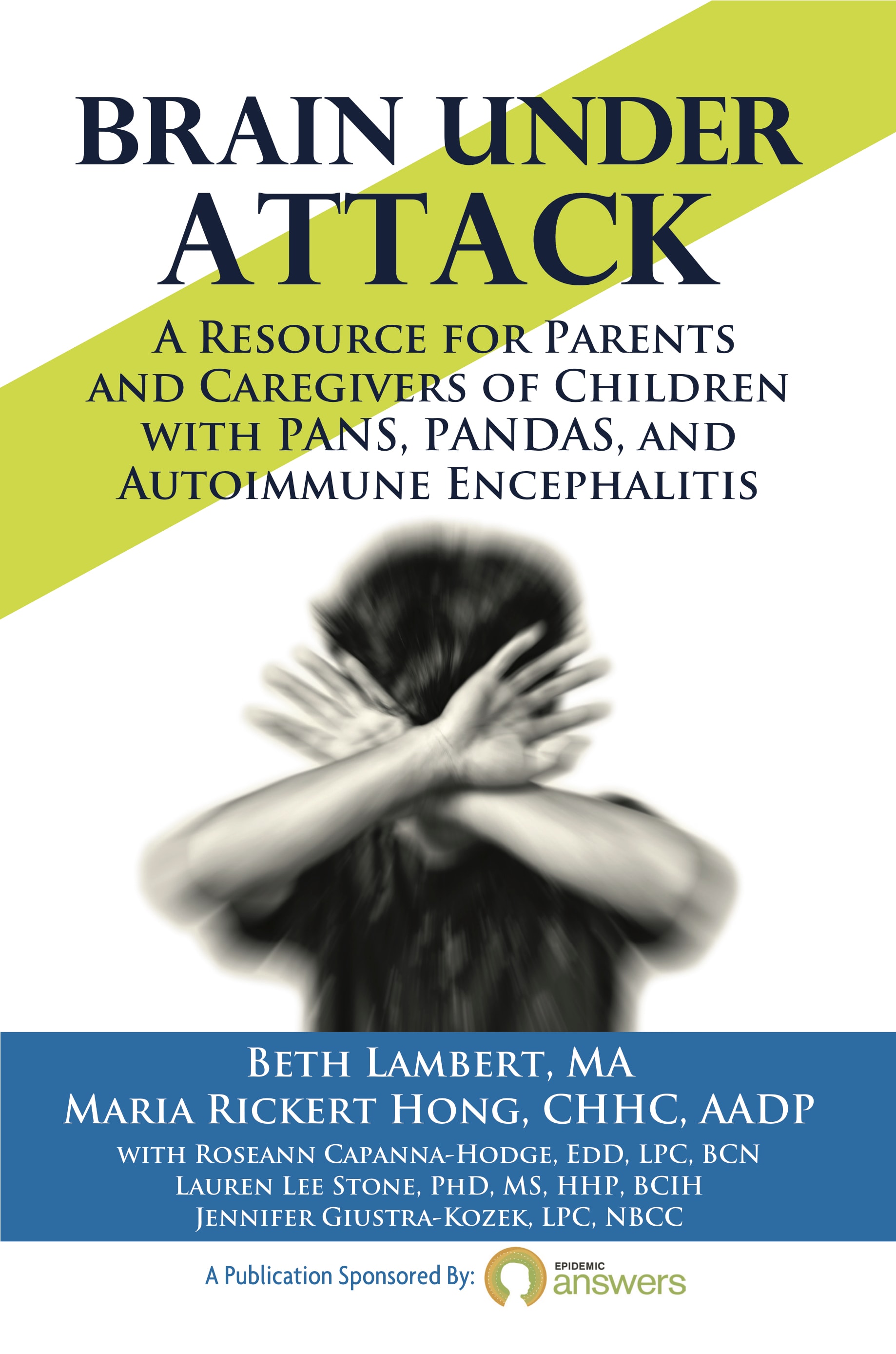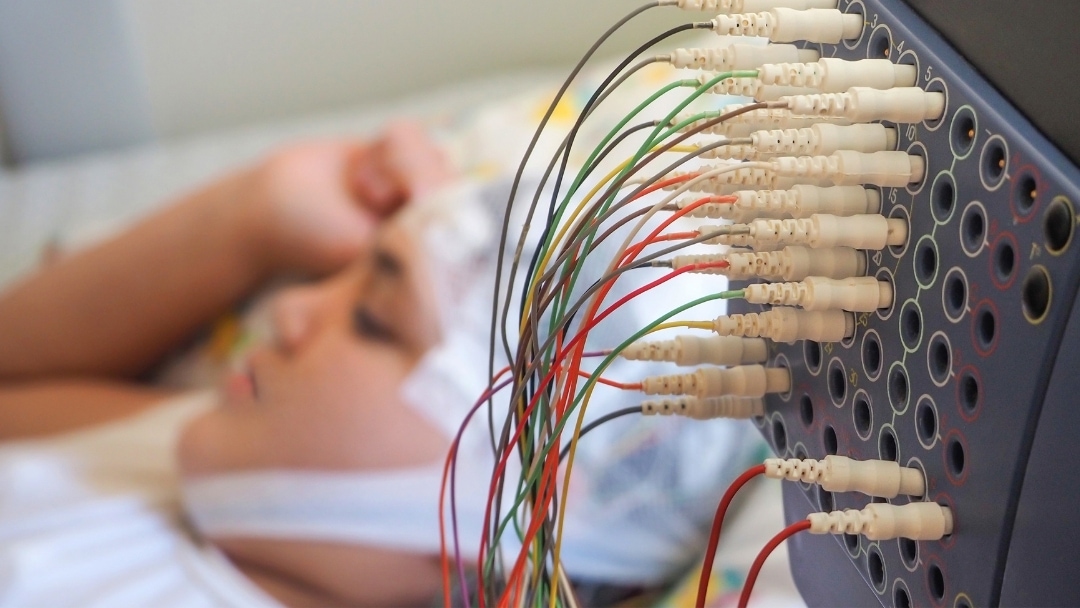What Is Neurofeedback?
Neurofeedback is brain-wave training. It is a type of “biofeedback that amplifies your brain waves and allows you to make your brain stronger.” As a non-prescription, non-invasive therapy, it is used for the reduction of neurological symptoms from pain, PTSD, addiction, seizures, ADHD, autism, SPD, anxiety, depression and other neurological disorders.
Neurofeedback is based on the idea of neuroplasticity, which is “the idea that the brain is not static but capable, if given the right amount of stimulation, of dramatic and long-lasting change.” It also means that the “brain learns to work around… damage,” as was shown in Norman Doidge’s groundbreaking book, The Brain That Changes Itself.
The History of Neurofeedback
A Symphony in the Brain walks the reader through the history of brain research as well as biofeedback research and the combination of the two. The author highlights discoveries made by researchers over the years and presents case studies that spurred on breakthroughs. Although this history may seem trivial for those who just want to get on with how neurofeedback can help them, the author writes in a compelling way that makes the reader appreciate this backstory.
How Does Neurofeedback Work?
Neurofeedback creates a learning feedback loop for the brain by rewarding it when desired brain waves are produced. The different types of waves are:
- Delta waves: These waves are produced during sleep and are in the range of 0-4 hertz (cycles per second).
- Theta waves: Dominant only when a person is drowsy or on the edge of sleep and are in the range of 4-8 hertz.
- Alpha waves: Occur more when a person is relaxed, comfortable and cooperative and are in the range of 8-12 hertz.
- Beta waves: These waves are present during normal, waking consciousness and are generally considered to be between 12 and 40 hertz.
- Gammas waves: These waves are between 40 and 100 hertz and are present for higher brain processing tasks such as cognition, information processing, perception and learning.
A brain map, otherwise known as a QEEG (Quantitative ElectroEncephalogram), shows which parts of the brain are producing which kinds of waves. From there, a treatment plan is devised, which usually entails the reduction of the stress response and the lowering of the fear response as well as other goals. These two goals are important because “stress has an extremely deleterious effect on the prefrontal cortex” and because “the amygdala governs fear response and is very susceptible to seizure activity.”
It may take dozens of sessions to retrain the brain towards a desired outcome. Neurofeedback is not a quick fix, as it usually takes at least several months or longer of sessions to created a lasting effect.
The Future of Neurofeedback
The author notes that “there is a great deal of bad blood between some of the major players in this burgeoning field,” which is probably “part of the reason there have not been more studies of neurofeedback and it has not become better known than it is.” Since the book’s republication in 2008, however, the American Academy of Pediatrics elevated neurofeedback to a “Level One – Best Support” intervention for ADHD, and over 2,000 more peer-reviewed medical research papers have been published. Clearly, this is an intervention that should be looked into for those with neurological disorders, and this book is a great starting place for those who want to know more about how the brain can heal.
Jim Robbins has been a freelance writer for over 30 years and lives with his family in Helena, Montana.
He has written regularly for the science section of the New York Times since 1980 and has written for numerous magazines including Conde Nast Traveler, Discover, Audubon, Smithsonian and many other national magazines.
He is the author of four books of non-fiction, including A Symphony in the Brain: The Evolution of the New Brain Wave Biofeedback, The Open-Focus Brain: Harnessing the Power of Attention to Heal Mind and Body, as well as books about the environment.

Still Looking for Answers?
Visit the Epidemic Answers Practitioner Directory to find a practitioner near you.
Join us inside our online membership community for parents, Healing Together, where you’ll find even more healing resources, expert guidance, and a community to support you every step of your child’s healing journey.
Sources & References
American Academy of Pediatrics. Biofeedback now a “Level 1 — Best Support” Intervention for Attention & Hyperactivity Behaviors. Evidence-based Child and Adolescent Psycho-social Interventions. 2012 Oct 5.
Arns, M., et al. Efficacy of neurofeedback treatment in ADHD: the effects on inattention, impulsivity and hyperactivity: a meta-analysis. Clinical EEG and Neuroscience, 40(3), 180-189.
Beauregard, M., et al. Functional magnetic resonance imaging investigation of the effects of neurofeedback training on neural bases of selective attention and response inhibition in children with attention-deficit/hyperactivity disorder. Applied Psychophysiology and Biofeedback, 2006 Mar;31(1):3-20.
Chiu, H.J., et al. Surface electroencephalographic neurofeedback improves sustained attention in ADHD: a meta-analysis of randomized controlled trials. Child Adolesc Psychiatry Ment Health. 2022 Dec 19;16(1):104.
Dudek, E., et al. The efficacy of real-time functional magnetic resonance imaging neurofeedback for psychiatric illness: A meta-analysis of brain and behavioral outcomes.
Neurosci Biobehav Rev. 2021 Feb;121:291-306.
Duric, N.S., et al. Neurofeedback for the treatment of children and adolescents with ADHD: A randomized and controlled clinical trial using parental reports. BMC Psychiatry, 2012 Aug 10;12:107.
Gani, C., et al. Long term effects after feedback of slow cortical potentials and of theta-beta-amplitudes in children with attention-deficit/hyperactivity disorder. International Journal of Bioelectromagnetism, 2008; 10, 4, 209 -232.
Gevensleben, H., et al. (2009). Is neurofeedback an efficacious treatment for ADHD?: A randomized controlled clinical trial. Journal of Child Psychology and Psychiatry, 2009 Jul;50(7):780-9.
Jarusiewicz, B. Efficacy of Neurofeedback for Children in the Autistic Spectrum: A Pilot Study. Journal of Neurotherapy. 2002;6(4).
Leins, U., et al. Neurofeedback for children with ADHD: A comparison of SCP and Theta/Beta protocols. Appl Psychophysiol Biofeedback, 2007 Jun;32(2):73-88.
Levesque, J., et al. Effect of neurofeedback training on the neural substrates of selective attention in children with attention deficit/hyperactivity disorder: A functional magnetic resonance imaging study. Neuroscience Letters, 2006 Feb 20;394(3):216-21.
Linhartová, P., et al. fMRI neurofeedback in emotion regulation: A literature review.
Neuroimage. 2019 Jun;193:75-92.
Monastra, V.J., et al. The effects of stimulant therapy, EEG biofeedback, and parenting style on the primary symptoms of attention-deficit/hyperactivity disorder. Applied Psychophysiology and Biofeedback, 2002 Dec;27(4):231-49.
Monastra, V.J., et al. Electroencephalographic biofeedback (neurotherapy) as a treatment for attention deficit hyperactivity disorder: rationale and empirical foundation. Child Adolesc Psychiatric Clin N Am, 2005 Jan;14(1):55-82, vi.
Moreno-García, I., et al. Results of Neurofeedback in Treatment of Children with ADHD: A Systematic Review of Randomized Controlled Trials. Appl Psychophysiol Biofeedback. 2022 Sep;47(3):145-181.
Neurofeedback Collaborative Group, et al.
Neurofeedback for Attention-Deficit/Hyperactivity Disorder: 25-Month Follow-up of Double-Blind Randomized Controlled Trial.
J Am Acad Child Adolesc Psychiatry. 2022 Dec 8;S0890-8567(22)01971-2.
Nicholson, A.A., et al. The neurobiology of emotion regulation in posttraumatic stress disorder: Amygdala downregulation via real-time fMRI neurofeedback. Hum Brain Mapp. 2017 Jan;38(1):541-560.
Pindi, P., et al. Real-time fMRI neurofeedback as a new treatment for psychiatric disorders: A meta-analysis. Prog Neuropsychopharmacol Biol Psychiatry. 2022 Dec 20;119:110605.
Rothenberger, A., et al. Informing the ADHD Debate. Scientific American Special Edition. 2004 Dec; 14(5):50-55.
Roy, S., et al. Effectiveness of neurofeedback training, behaviour management including attention enhancement training and medication in children with attention-deficit/hyperactivity disorder – A comparative follow up study. Asian J Psychiatr. 2022 Oct;76:103133.
Resources
Books
Robbins, Jim. “A Symphony in the Brain: The Evolution of the New Brain Wave Biofeedback.” Grove Press, 2008.




